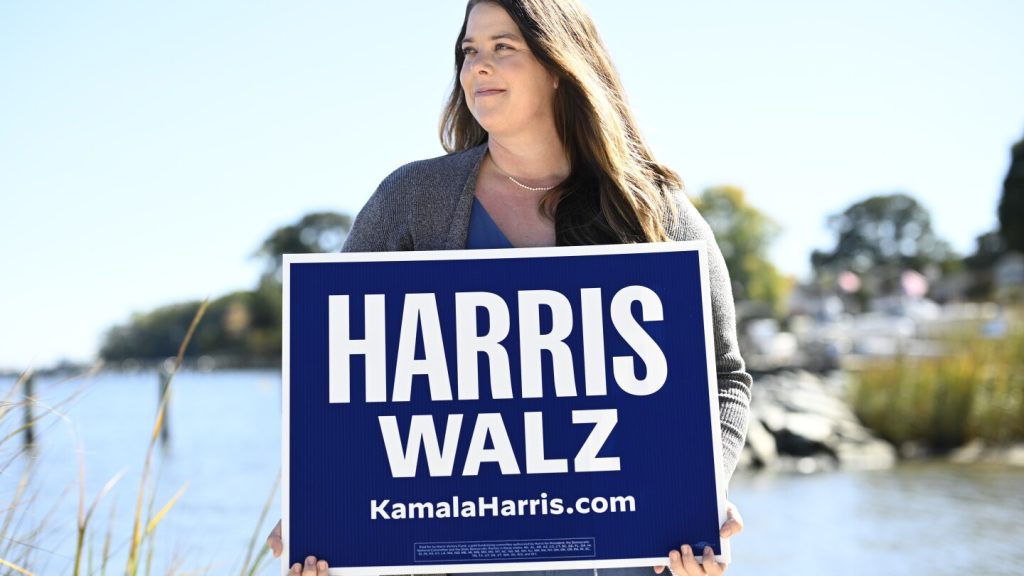In the midst of the presidential campaign, a surge of digital enthusiasm in the form of Zoom meetings has propelled Kamala Harris towards the Democratic nomination. Hundreds of thousands of participants have joined these Zoom calls, ranging from Black women to Taylor Swift fans, all geared towards mobilizing support for the vice president. Now, organizers are trying to funnel this digital energy into traditional get-out-the-vote efforts like phone banking and door knocking, all working independently of the official Harris campaign. These efforts include sending postcards, texting friends, canvassing battleground states, and even making friendship bracelets with campaign messages.
For many volunteers like Mary Catherine Tipton, these Zoom meetings have been a catalyst for involvement in the campaign for the first time. Tipton, a former teacher, was moved to take action after feeling the weight of the 2016 election results and not wanting to experience that disappointment again. She started by messaging her bridesmaids and has since expanded her outreach efforts to include friends and family, even going door-to-door in Pennsylvania to talk to residents. Tipton’s story is just one of many examples of how these Zoom meetings have inspired individuals to step out of their comfort zones and get involved in unprecedented ways.
The chain reaction of involvement started with a Zoom meeting for Black women hosted by Jotaka Eaddy’s organization Win With Black Women. The meeting, which had originally been a regular occurrence to support Black female politicians, ballooned into a massive pep talk, campfire, and telethon after Harris became the Democratic candidate. Similar Zoom calls were organized for Black men and white women, the latter led by gun control activist Shannon Watts. The enthusiasm and support generated from these virtual meetings have become a starting point for individuals who may not have otherwise participated in the campaign.
Many Harris supporters, like Rachel Roberts, have found a sense of community and momentum through these Zoom meetings. Roberts describes the experience as a wake-up call to prevent Trump from being re-elected and has become significantly more involved in politics this year compared to previous years. Whether it’s writing postcards, making phone calls, or watching the Zoom meetings with fellow supporters, individuals have found different ways to stay engaged and keep the momentum going. Affinity groups like Taylor Swift fans have organized their own initiatives to support Harris, emphasizing a more personal and impactful approach to reaching voters.
Despite initial mockery, Harris’ campaign has embraced the unofficial Zoom groups as a powerful force in mobilizing support for the vice president. Leaders of these groups have been kept informed of volunteer opportunities and campaign developments, further solidifying their role in the broader campaign efforts. An event organized by Oprah Winfrey brought many of these groups together, where Harris expressed gratitude for their support and emphasized the importance of unity in fighting against divisive forces. The Zoom meetings, once seen as fleeting trends, have now become integral to Harris’ campaign strategy and a testament to the power of grassroots mobilization.
As the election draws nearer, the impact of these Zoom meetings and volunteer efforts remains to be seen. But for now, they have created a sense of purpose, community, and momentum among supporters of Kamala Harris. From unexpected volunteers like Mary Catherine Tipton to dedicated organizers like Jotaka Eaddy, these digital gatherings have laid the foundation for a powerful movement that seeks to propel Harris towards a successful bid for the presidency. Whether this energy will translate into victory on Election Day is yet to be determined, but one thing is clear: the Zoom meetings that once seemed like a passing trend have now become a cornerstone of Harris’ campaign strategy.


